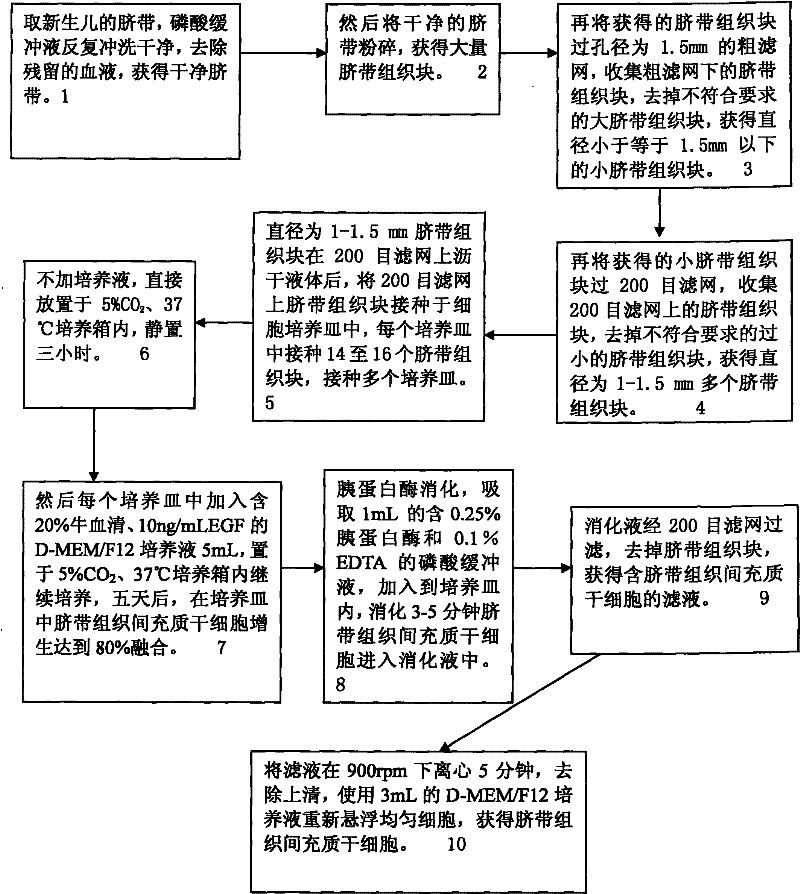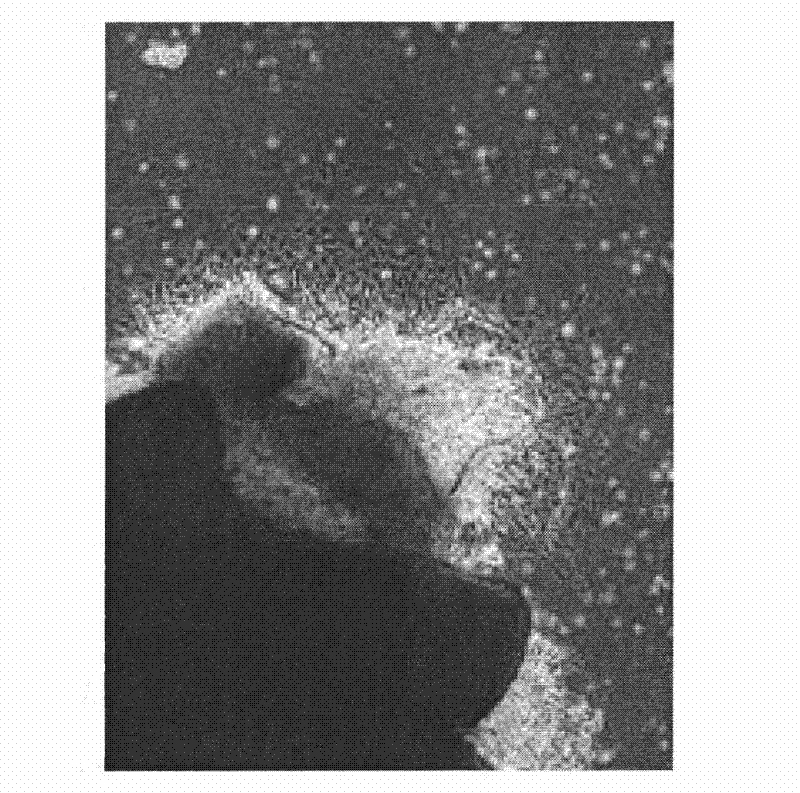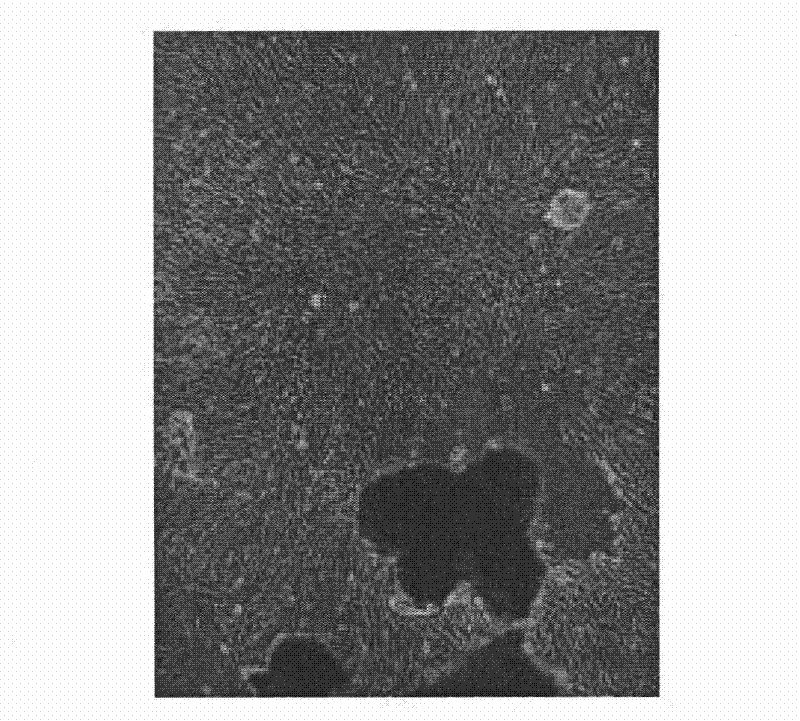Method for separating MSC (Mesenchymal Stem Cell) climbing sheets of umbilical tissue
A technology of umbilical cord tissue and stem cells, applied to bone/connective tissue cells, animal cells, vertebrate cells, etc., can solve problems such as difficulty in grasping digestion time, affecting cell quantity and quality, and affecting cell viability, so as to maintain cell The original activity and growth state, the effect of improving the yield of MSCs, and ensuring the quantity and quality
- Summary
- Abstract
- Description
- Claims
- Application Information
AI Technical Summary
Problems solved by technology
Method used
Image
Examples
Embodiment 1
[0030] A method for separating umbilical cord tissue mesenchymal stem cells by climbing slices. Take one umbilical cord of a newborn, rinse it repeatedly with 50mL of phosphate buffer solution to remove residual blood, and obtain a clean umbilical cord; crush it with a shearing device to obtain a large number of umbilical cords Tissue block; pass through a coarse filter with a pore size of 1.5mm, remove large pieces of umbilical cord tissue that do not meet the requirements, and obtain small umbilical cord tissue blocks with a diameter of less than or equal to 1.5mm; connect a 200-mesh filter under the coarse filter, and collect 200-mesh filter Small umbilical cord tissue blocks on the net, remove the too small umbilical cord tissue blocks that do not meet the requirements, and obtain multiple umbilical cord tissue blocks with a diameter of 1-1.5mm. The umbilical cord tissue blocks with a diameter of 1-1.5mm are drained on a 200-mesh filter , inoculate umbilical cord tissue blo...
PUM
| Property | Measurement | Unit |
|---|---|---|
| diameter | aaaaa | aaaaa |
| diameter | aaaaa | aaaaa |
Abstract
Description
Claims
Application Information
 Login to View More
Login to View More - R&D
- Intellectual Property
- Life Sciences
- Materials
- Tech Scout
- Unparalleled Data Quality
- Higher Quality Content
- 60% Fewer Hallucinations
Browse by: Latest US Patents, China's latest patents, Technical Efficacy Thesaurus, Application Domain, Technology Topic, Popular Technical Reports.
© 2025 PatSnap. All rights reserved.Legal|Privacy policy|Modern Slavery Act Transparency Statement|Sitemap|About US| Contact US: help@patsnap.com



